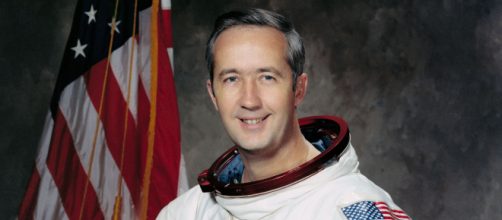During the 1960s, NASA astronauts were so famous in the United States they could be likened to rock stars. Some names, such as Neil Armstrong, Buzz Aldrin and Jim Lovell, remain common knowledge. But very sadly, many others have become less so with time.
The contributions of astronaut James McDivitt to space exploration would be immense. McDivitt had a long and distinguished career in the United States Air Force. Before, during, and after his tenure as an astronaut. But his achievements in space would, albeit understandably, become somewhat overshadowed by what followed soon after.
McDivitt has passed away
James McDivitt passed away on October 13, 2022, in Tuscon, Arizona. A specific cause was not immediately announced to the public, but NASA announced it on October 17.
NASA had chosen McDivitt as one of its second group of astronauts in 1962. Two years later, McDivitt was paired with Ed White for a historic space mission. Deke Slayton, chief of the Astronaut Office, teamed them together, given their long history with each other. McDivitt and White went to university and later tested pilot school together.
The following year, the two men were successfully launched into space. The duo performed several experiments and maneuvers during their time off-planet. But the most famous is undoubtedly the first time an American performed a so-called spacewalk.
Clad in a special suit, White exited the spacecraft and floated outside for nearly half an hour. From the inside of the craft, McDivitt photographed the experience.
Upon their arrival home, the two were given a hero's welcome and received a phone call from U.S. President Lyndon B. Johnson. Their mission was later portrayed on a pair of postage stamps. White later died in a fire during a spaceflight test alongside fellow astronauts Gus Grissom and Roger B. Chaffee.
Played a pivotal role in America's moon missions
In 1969, James McDivitt returned to space as commander of a pivotal mission in the United States' path to the moon. Astronauts David Scott and Rusty Schweickart were his crewmates. The mission's main goals were to perform various tests regarding the Lunar Module.
McDivitt and his crew tested the LM's ability to ascend and descend. They also proved that the LM could fly independently, rendezvous, and dock with the original command and service module. The crew also successfully tested a portable life support system that would become critical to NASA astronauts.
Altogether, the mission was regarded as a rousing success. One more dress rehearsal followed. Then, four months after McDivitt's mission, Neil Armstrong and Buzz Aldrin made the historic landing on the moon.
McDivitt resigned from NASA in 1972. He was a two-time recipient of the NASA Distinguished Service Medal by that time. He also retired from the U.S. Air Force and entered the private sector.
He took high-level positions with Consumers Power Company, Pullman Incorporated, and Rockwell International.
He was a Korean War veteran
Shortly after completing his Air Force training, James McDivitt was deployed to serve in the Korean War. There, he would serve as a member of the 35th Fighter-Bomber Squadron. McDivitt piloted F-80 Shooting Stars along with F-86 Sabres.
His later assignments included serving as a flight commander with the 332d Fighter-Interceptor Squadron. Eventually, McDivitt became a test pilot and participated in the X-15 program. He was slated to head the testing program for the F-4 Phantom II before applying for astronaut training.
McDivitt retired from the Air Force with the rank of brigadier general.
Military decorations he received include two Air Force Distinguished Service Medals, four Distinguished Flying Crosses, and five Air Medals.
McDivitt was born in Chicago, Illinois. He graduated from Kalamazoo Central High School in Michigan before attending what is now Jackson College in Jackson, Michigan. Eventually, McDivitt received an aeronautic engineering degree from the University of Michigan, where he graduated first in his class.


